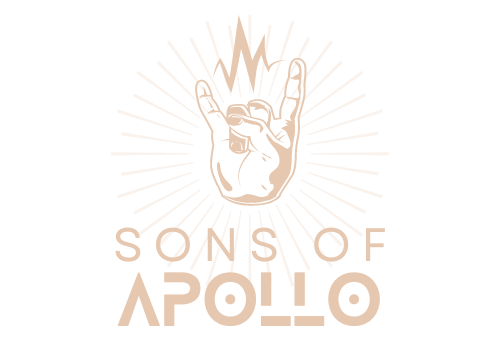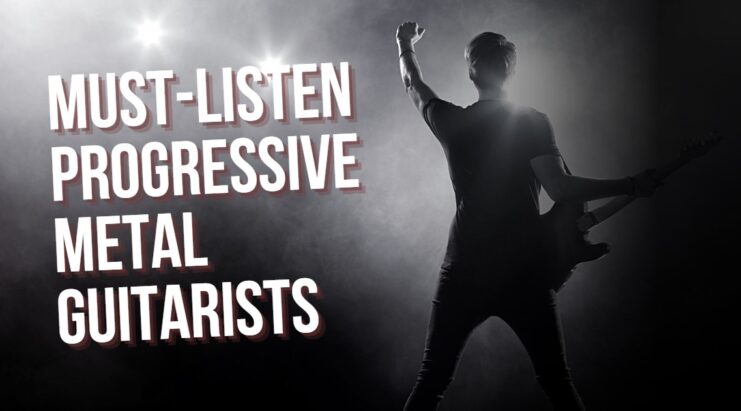Progressive metal is often characterized by complex structures, rhythmic variations and deep, intricate soundscapes. Although the genre originated in the ’70s, it truly exploded with bands like Tool and Dream Theater in the ’90s and early 2000s. As a result of this explosion, some of today’s most talented musicians emerged onto the scene – many of them being some fantastic guitarists!
In this guide we will look at some of the greatest progressive metal guitarists from past to present, showcasing each guitarist’s unique style that has been heavily influential to both existing fans and upcoming musicians alike. Each guitarist will also be examined for their musical improvements over time and for their innovation within the genre. We hope you enjoy our list of top progressive metal guitarists!
Before we dive deeper into this topic, one of these progressive metal groups that are worth checking out is the supergroup Sons of Apollo.
1. Tosin Abasi
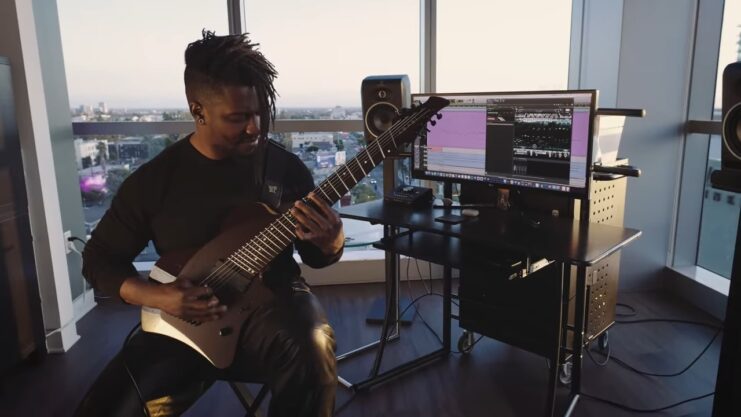
Tosin Abasi is a Nigerian-American progressive metal guitar virtuoso, composer, and producer. He is best known for being the frontman of the instrumental progressive metal project Animals As Leaders as well as being the lead guitarist of the progressive metal band Reflux. Abasi was named one of the Top 100 Greatest Guitarists of our Time by Guitar World magazine.
Let’s explore the career of Tosin Abasi and what makes him one of the top progressive metal guitarists.
Early Career
Tosin Abasi is one of the most influential and respected progressive metal guitarists in the music industry today. Born in Nigeria in 1983, Tosin relocated to the United States at an early age and developed a love for music that would shape his life and career.
Tosin’s early career began when he joined local bands based in Georgia, playing concerts and recording albums during high school and college. His earliest release was with Silver Spring before signing on with Reflux as a full member in 2003.
Tosin served as the lead guitarist for Animals As Leaders where he showcased his signature style—playing complex riffs filled with experimentation while pushing himself to explore uncharted musical boundaries.
Ever innovative, Tosin has played an integral role in extending modern guitar music toward new frontiers, continuously exploring cutting-edge sounds through extensive improvisation and experimentation.
Signature Style
His signature style is based around intricate compositions and challenging note lines which he creates with innovative techniques such as two hand tapping and rhythmically precise fingerpicking.
Abasi’s music draws influence from a diverse range of genres, including jazz, classical, traditional African music and even video game soundtracks. His unique playing style has seen him collaborate with other progressive metal luminaries such as Animals As Leaders, Periphery and many more.
He is also notable for his use of eight string guitars which give him an extended range of notes to work with. Further to this, Tosin often employs extended scale patterns to create beautiful harmonies in his solos that are both melodic and complex at the same time. He frequently uses legato patterns combined with rapid picking which gives his solos an impressive sense of flow and momentum during live performance.
Overall, Tosin Abasi’s approach to progressive metal guitar remains highly influential in the world today; offering a modern alternative to traditional melodies that will keep listeners on their toes!
Influences
Tosin Abasi is today considered one of the most influential progressive metal guitarists. The Nigerian-American musician broke into the music scene in 2007 with his solo project Animals as Leaders, subsequently becoming one of the leading figures in modern progressive metal.
Abasi draws influence from a wide range of musical genres, including jazz, rock, and classical music. His style is often described as combining both aggressive percussive riffs along with melodic passages and often features extended range techniques such as eight-string guitars. Popular albums by Abasi include Animals As Leaders (2009) and The Joy of Motion (2014).
Aside from composing new material, Abasi regularly performs technical instructional sessions for aspiring guitarists at major music events around the world. He has also released multiple comprehensive Guitar Workouts which are popular among aspiring six-string players. Above all else, Abasi wishes to inspire musicians to challenge accepted norms through creative sonic exploration.
2. Jeff Loomis
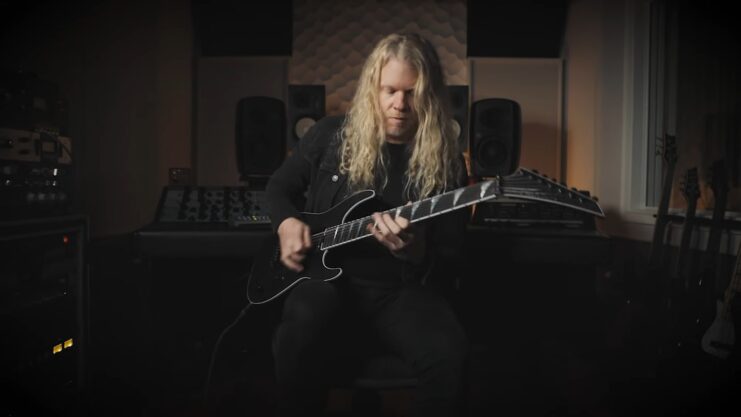
Jeff Loomis is widely considered to be one of the most influential guitarists in the progressive metal scene. His style of playing combines a unique mix of technical prowess, creativity and showmanship, making him one of the most sought after guitarists in the progressive metal genre.
His signature sound has become an iconic part of the progressive metal movement, and it’s no wonder why Jeff Loomis is regarded as one of the top progressive metal guitarists of all time.
Early Career
Jeff Loomis is one of the most influential and respected progressive metal guitarists of all time. He first rose to public attention as the former lead guitarist of the pioneering metal group Nevermore in the 1990s. During this period, Loomis released two albums with Nevermore and played on several iconic tracks, including ‘Dreaming Neon Black’, ‘Insignificant’ and ‘The Seven Tongues Of God‘.
In addition to his technical proficiency, many attribute Loomis’ success to his extensive knowledge of music theory and composition. His emotionally charged solos provided a new milestone for modern heavy metal guitar playing, setting benchmarks that inspired a wave of young musicians to push their own creative boundaries.
His solo material has also been lauded by fans and critics alike for conveying deep emotion through heavy riffs, creating texture-rich soundscapes layered with classical motifs and classic rock-inspired rhythms. His solo career began with the 2008 release “Zero Order Phase” and followed up with 2012’s acclaimed album “Plains Of Oblivion”. He continues to stay active as an educator, playing clinics around the world and offering personal mentoring programs online.
Signature Style
Jeff Loomis is renowned as a master of progressive metal guitar playing. His signature style of playing focuses on intense alternate picking and fast legato combined with heavy use of triplets and diminished arpeggios. He often works in synthetic scales for complex melodic motions which are also used in lead sections.
Loomis further draws influence from classical music and jazz fusion by incorporating wide intervals, chromatic movement, and slides throughout his playing creating dissonant chords and harmonies within his solos. This playing style defines his overall sound that combines use of the seven-string guitar with various solo techniques such as tapping, sweep-picking, two-handed techniques, trills and slurs creating scintillating sonic textures for many compositions.
Influences
Jeff Loomis has developed a wide-ranging style, combining elements of neo-classical metal, progressive metal, thrash metal and industrial metal. His influences include classical, jazz and blues music, as well as guitarists such as Yngwie Malmsteen, Jason Becker, Tony Iommi and Brian May. He is also known for being a fan of Iron Maiden guitarist Adrian Smith.
3. Paul Masvidal
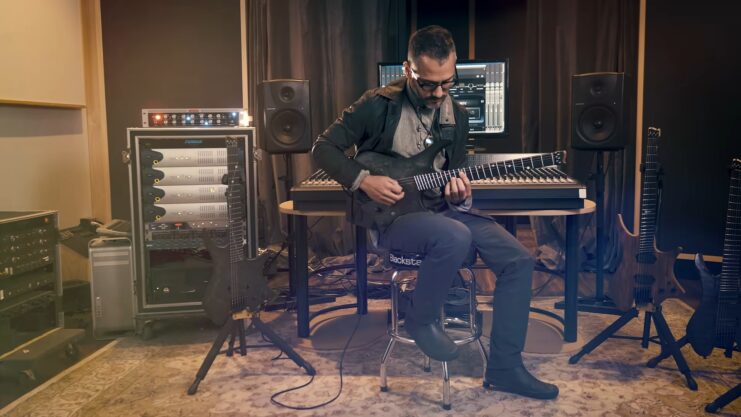
Paul Masvidal is one of the major innovators of the progressive metal genre. He has been an influential figure in the progressive metal music scene since the mid 1980s. His extensive work in Cynic, Death, and other metal bands has earned him a reputation as one of the premier guitarists in the genre.
His unique playing style and use of various scales, makes him stand out from other metal guitarists.
Let’s take a look and explore more about Paul Masvidal’s contributions to the progressive metal genre.
Early Career
Masvidal’s career first began when he moved from his Florida hometown to Boulder, Colorado in 1984. He met and joined forces with Chuck Schuldiner, who would go on to become a legendary figure in extreme metal music and they later formed death. During this time Masvidal’s playing style started to evolve – focusing on slow melodic lines as well as heavy riffs with frequent use of pinch harmonics and two-hand tapping techniques.
It was not until 1991 when Death released their highly acclaimed album Human that Paul Masvidal got serious recognition for his songwriting skills and lead guitar playing within the underground metal scene.
The album featured more technical guitar playing than other albums throughout their discography which showed off the use of longer legato licks augmented with various chord enhancement techniques such as hammer-on/pull outs along with sweep picking arpeggios – all fused into gripping melodic passages.
Highly respected by fellow musicians such as Metallica’s Kirk Hammett & Dream Theater’s John Petrucci, Masvidal has gone on to become a widely admired musician among prog metal fans around the world for his unique playing style, songwriting abilities and production skills.
Signature Style
Paul Masvidal is a unique voice in progressive metal, with a sound that stands out from other genre staples. Hailing from the band Cynic, Masvidal brings an expressive range to his style that takes cues from jazz, classical and especially Latin music.
His playing is often described as emotional and sophisticated, marked by shimmering leads and soloing that show a profound understanding of the instrument. His leads are always melodic and full of creative turns in direction. Whether outlining complex arpeggios or blazing up-tempo scales, he emits a vibrant aura into every note he plays.
Masvidal’s use of effects further diversified his sound – he often adds a chorus to increase the clarity of lead melodies while delaying sustaining notes to create elaborate sonic landscapes.
His technical proficiency amounts to much more than sheer speed when added along with tasteful chord voicings, utilizing concepts such as dropped tunings and open string phrases to add depth. What results is an unmistakable signature style deeply rooted in traditional technique but inviting of various influences into its core – one that sounds completely unique but faithful to modern metal at its heart.
Influences
Masvidal has been praised for his ability to play intricate rhythms as well as his melodic solos. He began playing guitar at age 16 and has since performed on multiple albums and documentaries.
Masvidal’s main influences are jazz fusion, classic rock, hard rock and metal music. He cites many guitarists as influences including Jeff Beck, John McLaughlin and Eddie Van Halen amongst others. Additionally, he also drew inspiration from world music styles such as Indian classical and African music.
Ultimately, Masvidal is an accomplished musician who combines the sounds of these various genres together to create a uniquely progressive style of metal music.
4. Misha Mansoor

Misha Mansoor is a modern master of progressive metal guitar techniques. Probably best known for his work with the band Periphery, Misha has established himself as one of the premier guitarists of the modern age. His inventive use of 7-string, 8-string and even 9-string guitars along with complex rhythms, creative use of synths, and an enchanting melodic style have earned him legions of fans around the world.
Early Career
Misha Mansoor is considered one of the leading musicians in the Progressive Metal genre and is best known for his work with Periphery, which was formed in 2005. Mansoor’s use of extended guitar techniques and innovative sound design has earned him an ever-growing reputation within the heavier music community as one of the most influential modern metal guitarists.
From an early age, Misha had a passion for messing with sound and technology. He often experimented with recording his own samples and later he even built homemade amps from chip boards as a teenager.
After learning more about programming and sequencing software, he started recording demos on his laptop featuring his homemade guitar tones. These recordings then became the instrumental songs featured on Periphery’s first album, “Periphery” (2011).
Since then, Misha has become an industry leader in progressive metal by exploring complex songwriting ideas while keeping lush guitar textures at the forefront of most of his recordings.
He continues to use field recording techniques to capture some of the most interesting sounds possible while continuing to rely on vocal melody heavy songwriting ideas that evoke a progressive yet heavy atmosphere on modern metal albums.
Signature Style
Misha Mansoor is a guitarist best known for his work in the progressive metal act Periphery, and for his extensive work as a solo artist and producer. His signature sound combines elements of progressive metal, jazz fusion, alternative rock, and electronica. He has developed an eclectic style that employs different techniques such as tapping, fingerstyle lead playing and drop-tuning all at once. He is also fond of using clean tones with complex delay effects to create ambient soundscapes.
Misha is renowned for his expansive range both tonally and dynamically, often jumping between extreme lows and highs with ease. He often employs dissonant chords to create tension while also utilizing melody to drive the structure of the music forward.
His mix of heavy metal riffs and cleverly crafted chord progressions are equally effective when used in melodic or aggressive contexts which makes him one of the most innovative players in progressive metal today. His live performances are renowned for their energy as he moves seamlessly across genres demonstrating skillful musicianship throughout.
5. John Petrucci
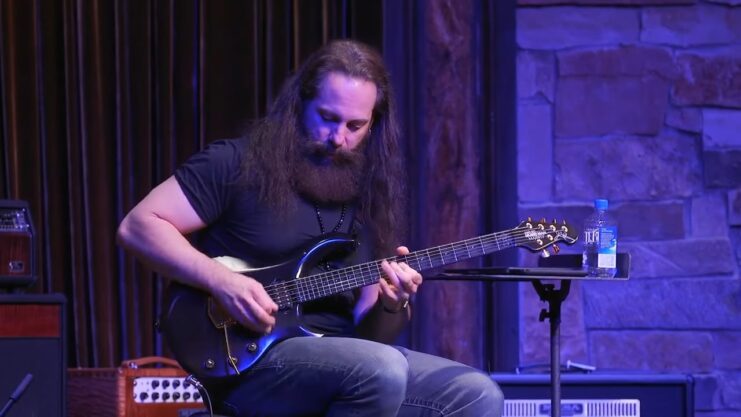
John Petrucci is an American guitarist, composer, and founding member of the progressive metal band Dream Theater. He has become one of the most influential guitarists in the progressive metal scene, known for his technical skill, intricate riffs, and emotional solos.
Early Career
He began playing guitar at the age of 12 and was heavily influenced by guitarists such as Steve Morse and Steve Howe. He attended the Berklee College of Music in Boston and later formed Dream Theater with bassist John Myung and drummer Mike Portnoy.
Signature Style
Petrucci’s signature style is characterized by his fast, precise alternate picking, complex tapping, and sweeping arpeggios. He often incorporates classical and jazz-inspired elements into his playing, creating a unique blend of genres. Petrucci is also known for his use of seven-string guitars, which allows him to explore lower registers and create heavier, more complex sounds.
Influences
He cites a wide range of influences on his playing, including guitarists Steve Morse, Steve Howe, Allan Holdsworth, and Al Di Meola. He has also been influenced by the progressive rock bands Rush and Yes, as well as jazz fusion pioneers such as Chick Corea and Mahavishnu Orchestra.
Petrucci’s unique blend of influences has helped him to create a sound that is distinctly his own, and has made him one of the most respected and innovative guitarists in the progressive metal genre.
FAQs
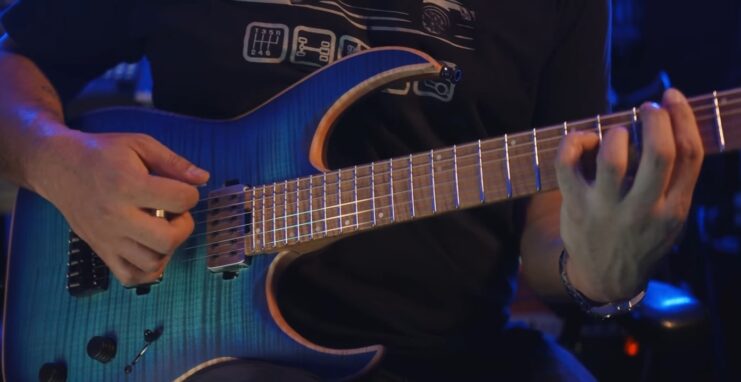
1. What makes progressive metal guitarists unique?
They are known for their technical proficiency, creativity, and innovation. They often incorporate elements from various musical genres and use unconventional techniques to create their own unique sound.
2. What are some of the most popular songs by these guitarists?
Some of the most popular songs by these guitarists include “CAFO” by Tosin Abasi, “The River Dragon Has Come” by Jeff Loomis, “Veil of Maya” by Paul Masvidal, and “Jetpacks Was Yes!” by Misha Mansoor.
3. Where can I find more information about these guitarists and their music?
You can find more information about these guitarists and their music by checking out their official websites, social media accounts, and music streaming platforms such as Spotify and Apple Music. There are also many online forums and communities dedicated to discussing progressive metal and its guitarists.
4. What sets progressive metal guitarists apart from other guitarists?
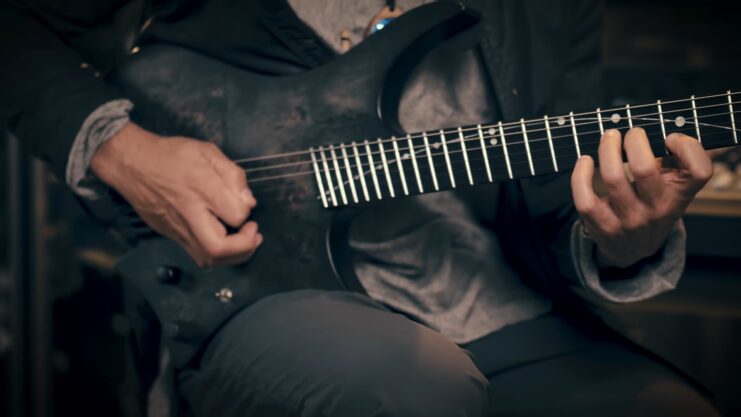
They are known for their technical ability, speed, and complex songwriting. They often use unusual scales, extended techniques, and intricate solos to create a unique sound.
5. What equipment do progressive metal guitarists use?
They typically use high-end electric guitars with extended range, such as seven or eight strings. They also use amplifiers and effects pedals to create their distinctive sound.
6. What are some key techniques used by progressive metal guitarists?
Some key techniques used by them include sweep picking, tapping, legato playing, alternate picking, and economy picking. They also use a wide range of extended techniques, such as string skipping, hybrid picking, and two-hand tapping.
7. How has progressive metal evolved over time?
It has evolved significantly over time, with new techniques, sounds, and approaches being developed by successive generations of musicians. Today, the genre continues to push the boundaries of what is possible with heavy metal music.
8. What is the future of progressive metal guitar playing?
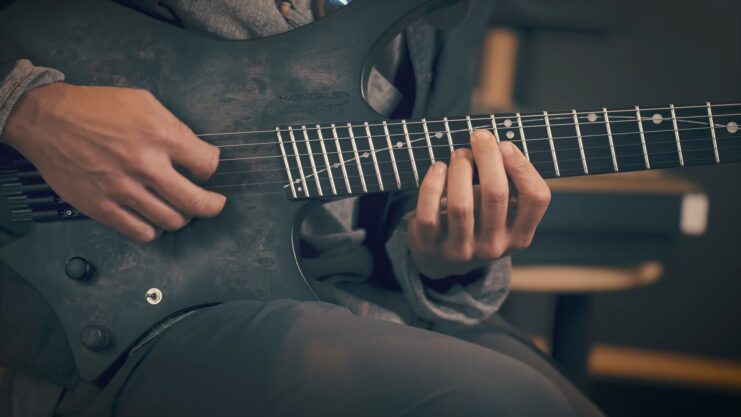
The future of it is bright, with new guitarists continuing to push the limits of what is possible with the instrument. As technology continues to advance, it is likely that we will see even more complex and innovative guitar playing in the years to come.
Conclusion
It has been a mainstay of the metal scene for decades, and its popularity is still growing. While it can be hard to wrap your head around some of the more complex techniques, that sense of accomplishment when you nail a progressive metal riff is unlike anything else!
These guitarists have made huge impacts on both their own sound and those of other performers in their genre. Each is incredibly influential and talented in their own unique way, showing that there is no single ‘right’ way to play progressive metal.
From outside-the-box guitars run by John Petrucci to the hyper speed shredding of Yngwie Malmsteen, these incredible artists have gone above and beyond to influence modern metal music for years to come.
